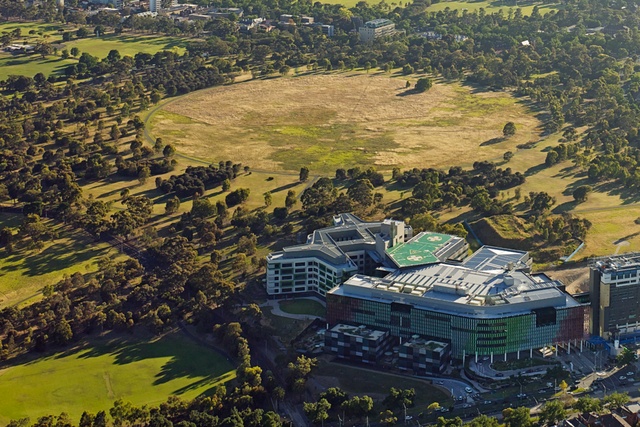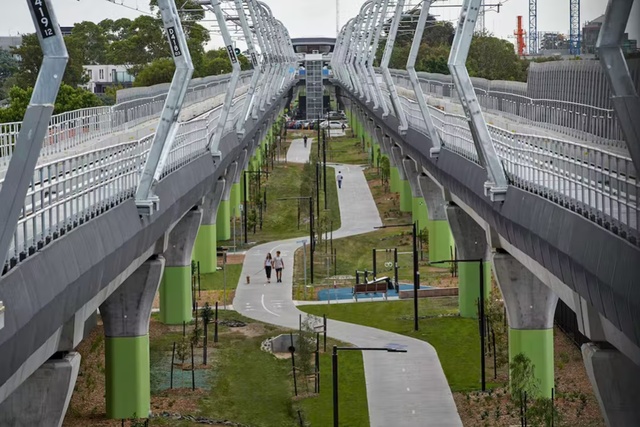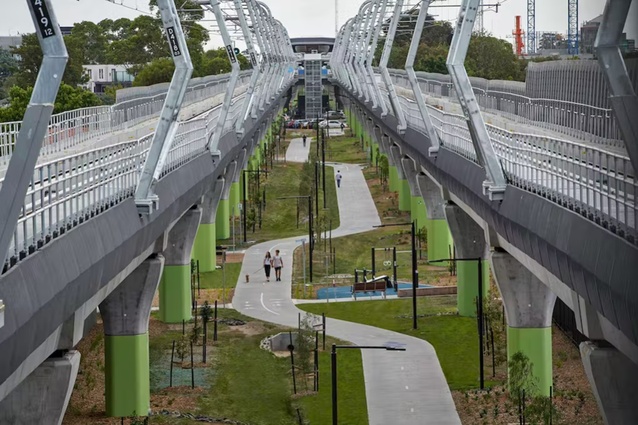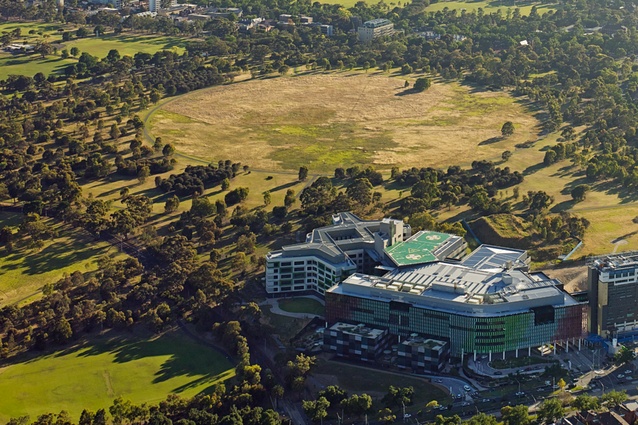Time for a New Zealand Government Architect?
As the debate around the design quality resulting from intensification of towns and cities across Aotearoa continues, is it again time to ask the question: Do we need a Government Architect? Patrick Sloan speaks to Jill Garner about her role as Victoria’s Government Architect in Australia and considers the many positive outcomes that such an office can deliver.
The Resource Management (Enabling Housing Supply and Other Matters) bill is perhaps one example of where early input from a Government Architect, in a policy advisory capacity, may have delivered outcomes more aligned with the development of high-quality housing solutions and a community-oriented urban environment. Another area which could benefit from the input of a Government Architect, in a design review capacity, are significant private developments and large-scale public works projects.
To provide insight to what the role of Government Architect might look like, I spoke with current Victorian Government Architect Jill Garner, based in Melbourne.
How did the role of Government Architect in Victoria come about?
I guess you would say the introduction of the government architect in its current form came about when John Denton was invited to take up the role in 2006. I believe it was established in response to lobbying by various interest groups and I imagine, much like the interest that has been raised in New Zealand, that the Institute of Architects, Registration Board and practitioners all supported the idea that a voice in government was needed to advise government as they moved away from their public works role, becoming a client, rather than a producer of architecture. To be a good client of architecture you’ve got to understand the process, the construction industry, and you’ve got to understand and value design. Our public service is not skilled in that role.
Australia’s first government architect was Francis Greenway, who arrived in Sydney as a convict and in 1816 became head of the public works, responsible for the colony’s first public buildings. If we look at Victoria, from about 1860 there was also a government architect who held the title of Inspector-General of Public Works. The Public Works designed significant buildings on behalf of government and ran an architectural office of sorts – producing schools, churches and other civic building types.
Interestingly, the Public Works office in New South Wales (NSW), headed by the NSW Government Architect, was in continuous operation for 200 years until 2016 when it was dissolved, becoming advisory. Victoria’s Public Works operated until it was shut down in about 1987 and, when I was a young architect, it was seen as quite a desirable place for architects to train. So, there was nobody in the role of Government Architect or head of public works from 1987 in Victoria, until the office was re-imagined in 2006.
How long have you been in the role and what is the typical tenure?
Typically, the tenure is four years – the job is advertised with a four-year term. John Denton held the role for two years – he is a highly regarded architect and gave the role real status when it was set up – he brought reputation, wisdom and significant knowledge about the realities of the construction industry. The role was then taken on by Geoffrey London, a highly regarded academic, who came to Melbourne from Western Australia, where he had been a former government architect. Geoffrey stepped down while into his second term, and then I took on the role in 2015. I am now in my second term.
Advice, Advocacy and Collaboration are the three tiers or layers of your process. Can you elaborate on each of these?
We’re not a regulatory body in any way so, much like any advisory body, we might be considered as ‘nice to have’. If we were embedded in the regulatory or planning process, we would probably end up being a tick box exercise – “yes we’ve been through the Government Architect’s office, they’ve seen this project and we’ve ticked that box as part of getting a permit”.
Instead, we provide guidance and advice to get to better project outcomes – improving what they might otherwise be without us. There have been instances where it has been suggested we add red tape and hurdles but we make sure our advice is intelligent and achievable, often facilitating project progress.
Our advocacy covers a very wide range of issues. We try to get ourselves in the room at the outset of a project to add intelligent commentary to early discussion. The advisory role is quite invisible and I don’t think many in our industry really know how many meetings we’re sitting in with government, trying to influence the original decision-makers. For example, government might decide they’re going to build a national gallery – if we can get in the room early and question key issues like site selection, we can help guide decisions as opposed to them being taken for reasons of expediency.
To collaboration, I think one of the interesting things about architects is our understanding that one player doesn’t solve a problem. Major projects and urban issues are so incredibly complex – they need multiple parties around the table to solve them. We often open conversations, workshops and discussions to a far broader range of people, disciplines and organisations than would normally take place. We encourage cross-disciplinary collaboration, putting architects in the room with engineers and others – trying to break down barriers so that a renewed understanding of collaboration gets traction.
In terms of your time and the way the office works, is there a particular area that you spend most of your time in?
I think we are spread right across all three areas. We’re a small team – when I started there was about seven of us and we’ve doubled that now but we cover a huge amount of ground. I think we might be the smallest Government Architect team in Australia but we have an incredibly busy and full portfolio of things to do, and we’ve established processes that help us to expand our reach.
I’d say most of our time now is spent on projects which are realisable – projects that are being or will be built. The current state government has been in flat-out construction mode for years, with an incredible commitment to infrastructure and other public projects. That means we’ve also been flat out in project advice mode.
The Design Review Panel process is apparently very successful in Victoria. How did it come about and how does it function?
We introduced the Design Review Panel because our small team just couldn’t cover the ground. We looked at how we might extend our reach using the UK’s Commission for Architecture and the Built Environment (CABE) as a model – they had used a design review panel process for a very long time. Our panel was put together to extend what we were already doing – it means the ground that we cover is huge in comparison to what we would normally be able to do.
We now have a pool of 70 industry representatives on the panel – and each reviews two or three projects a year. They’re built environment experts with industry knowledge, design expertise, great critical capacity and the capability of looking at a project and offering intelligent, constructive critique. We have an internal team of three people who direct and manage the design review process.
One of the great things about our design review process is the collaborative, cross-disciplinary discussion. We all understand how difficult the architectural process is and how complex analysing an architectural brief is, so we’ve got to take all of that into consideration and understand what is achievable out there, in the real world of construction, when we provide our review.
One of the most important things I’ve learned after many years of providing design advice is that if you’ve got a competent, skilful architect, you will likely get a good outcome. Despite the project challenges, they will listen, and they will understand that while external design critique may feel challenging, if they do listen carefully, they will step the project up in one way or another.
What are some of the good design outcomes following input or review from your office?

The Royal Children’s Hospital here in Melbourne is a good example where we were involved in the assessment of project options. The successful design concept had the children’s wards looking over Royal Park, which meant that the spaces where children were getting well had a landscaped garden outlook. We could point to evidence around the health and well-being benefits of this outlook to nature. Although there may have been more external wall surface to include in project costs, with the project located at the edge of the Royal Park, the value of the design decision is proven.
Another example is the Caulfield to Dandenong Level Crossing Removal project – one of more than 50 projects across metropolitan Melbourne aiming to resolve conflicts between rail, road and pedestrians. Commonly considered a transport problem needing an engineering solution, we have been vocal in our opinion that these are urban design problems in highly functioning, existing suburbs. We have questioned the implications for the street, pedestrian networks, safe pathways for children, schools and integrated bike networks. In the Caulfield to Dandenong project, the rail lines were elevated above ground, which provided the opportunity for 17 kilometres of public open space underneath. From community fear to embracing this changed condition, the project has set a benchmark for integrated urban design outcomes in infrastructure projects.

Your office produces the Good Design publications. How do they work and what was the intention?
Because we work as an advisory body, we wanted to capture the learnings from our various engagements into a series of advisory notes to inform future projects facing similar concerns. I think we’ve all got to understand that we are not going to have a static city and we do need to accommodate change. So, how might we inform (a) the community, (b) the government as a client and then (c) the design industry?
As recipients of a public building or urban design project, the community need to be able to judge whether a project is good or bad change. Our Good Design publications help inform non-experts. They also help architects think more laterally and more intelligently about the complexity of the brief, and the reality of the project. If we can help designers to think about an overarching design ambition embedded in a project rather than solving a compliance issue in the leanest possible way, then I think we get better outcomes. They also talk about what government needs to demand in good public work – they provide a set of parameters to guide the designers, and by which a project can be judged by both government and community as a client.
Victorian Government Architect Good Design Publications
How does the Government Architects Network Australia (GANA) function?
I understand that GANA started with two Government Architects – Peter Mould in NSW and Geoffrey London in Western Australia – committing to collaboration and sharing of similar concerns. As more state architect roles have been established, this relationship has evolved into the national network that it is today. As mostly small organisations, with limited capacity and low budgets, the sharing of information, resources and research has become invaluable.
A great thing about GANA is that we are a bunch of architects who want to talk about the design of our public projects. We are all in government so there’s no need for us to be protective and it’s become an open and sharing set of voices – we share our difficulties, we share our pressures, where our funding is coming from, and we glean intelligence from each other.
Despite the colour of our various Governments and the platforms from which they work, we are really all dealing with similar challenges. We’re all representatives of the voice of our community and advocating for the best possible built environment. We are all battling to elevate the concept of long-term legacy.
One of the key challenges we are facing across New Zealand is the ongoing housing crisis. How has your office engaged with housing intensification in Melbourne?
For the last two years, we’ve been working on a project called Future Homes, which emerged from our work on the Better Apartment Design Standards for Victoria. We ran a competition, using the existing planning framework, to see what a double block in the middle ring suburbs could look like if it was designed to strategically bump up housing density. It was an open competition and we selected four winners.
Over the last year, we’ve worked closely with the winning architects to make each of the projects stack up commercially while working with the Department of Planning to put a streamlined planning process in place. If a developer chooses to use one of these four models, the planning process can be streamlined. This is of great value to developers.
There are many issues associated with housing intensification and there can be unintended consequences. How can we embed quality design and how can we make sure that we build something that won’t eventually be found to be an inappropriate development for its place? There are key practical design concerns such as daylight, sustainability, adequate cross ventilation, outdoor space and shared open space. There’s also the important concept of community being embedded in a development. There must be criteria that developers should have to prove before getting a green light to proceed.
Considering the population here in New Zealand, the role of Government Architect would likely be a national role. What are your thoughts on a national role versus smaller, regional roles across New Zealand?
That question has been raised in Australia as well and I know that there’s been a push from the Australian Institute of Architects to have a National Government Architect. We’ve had this discussion within the Government Architects Network Australia (GANA) and we suggest that, in the absence of a national position, GANA might be considered an appropriate shared voice representing all states on any issue deemed important at a national scale.
While the Victorian Government Architect engages with the City of Melbourne, we engage equally with local government jurisdictions – Cities of Monash, Casey, Geelong and Ballarat, both metropolitan and regional Councils, some of whom have internal design champions. If I was to look at New Zealand, perhaps what you have is almost one of our state exemplars, potentially with a sub-set of city architects across the country that might work with and feed up to the broader, national role.
We have an Urban Design Panel here in Auckland, which doesn’t have any statutory power. What are your thoughts on the value of a Government Architect having statutory power?
That’s exactly what our world looks like. You’ll find that it’s different in South Australia, Western Australia and NSW. Some of our Government Architects are inherently tied to the process of planning approval.
In Victoria, we’re not written into the regulatory planning process and it is not all bad being independent and advisory. It means we need to be incredibly convincing and intelligent with our commentary and provide advice and guidance which is not cost prohibitive, not impossible, helps prioritise what’s important in a project and perhaps de-prioritises things that are less important.
As the discussion around a Government Architect continues here in New Zealand, what are some of the key things we need to consider?
One of the key things to consider is the benefit to the community. So much of what Government does happens quietly behind closed doors and the community is often concerned. I really like to be able to reassure the community that, in fact, behind those closed doors there really are people who do care about both the physical built environment and the natural environment – people who are very aware of what community benefits can be.
If we can put a Government Architect in the room with those having an economic argument, if there is a voice for design, for the public and for legacy in the conversation, the benefit to the community is huge. If a community is pushing for what we consider a project gain, I think that’s an important lens to consider.
Looking again to John Denton, New Zealand might want to put someone in the role, initially, with a similar public profile and a similar level of proven experience and commitment to design and the built environment.
Another consideration could be the potential expansion of GANA to include New Zealand, so we become an A/NZ network of Government Architects. We have so many shared interests, culture and similar ways of building and developing our cities.












